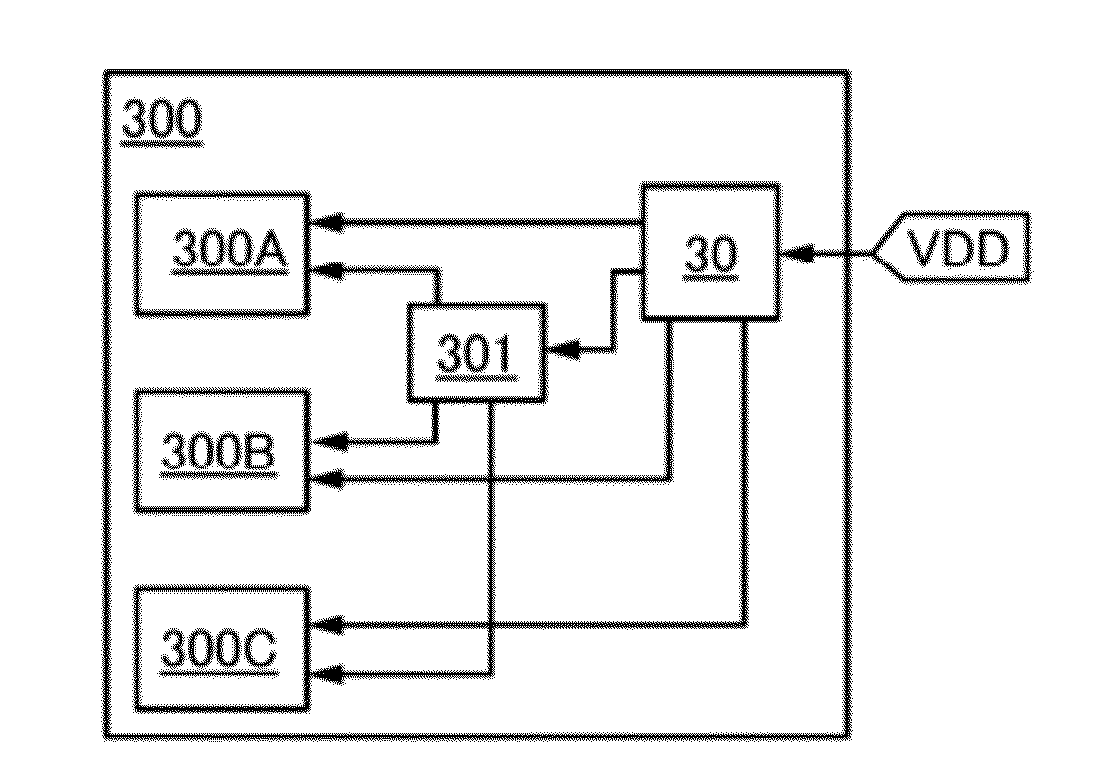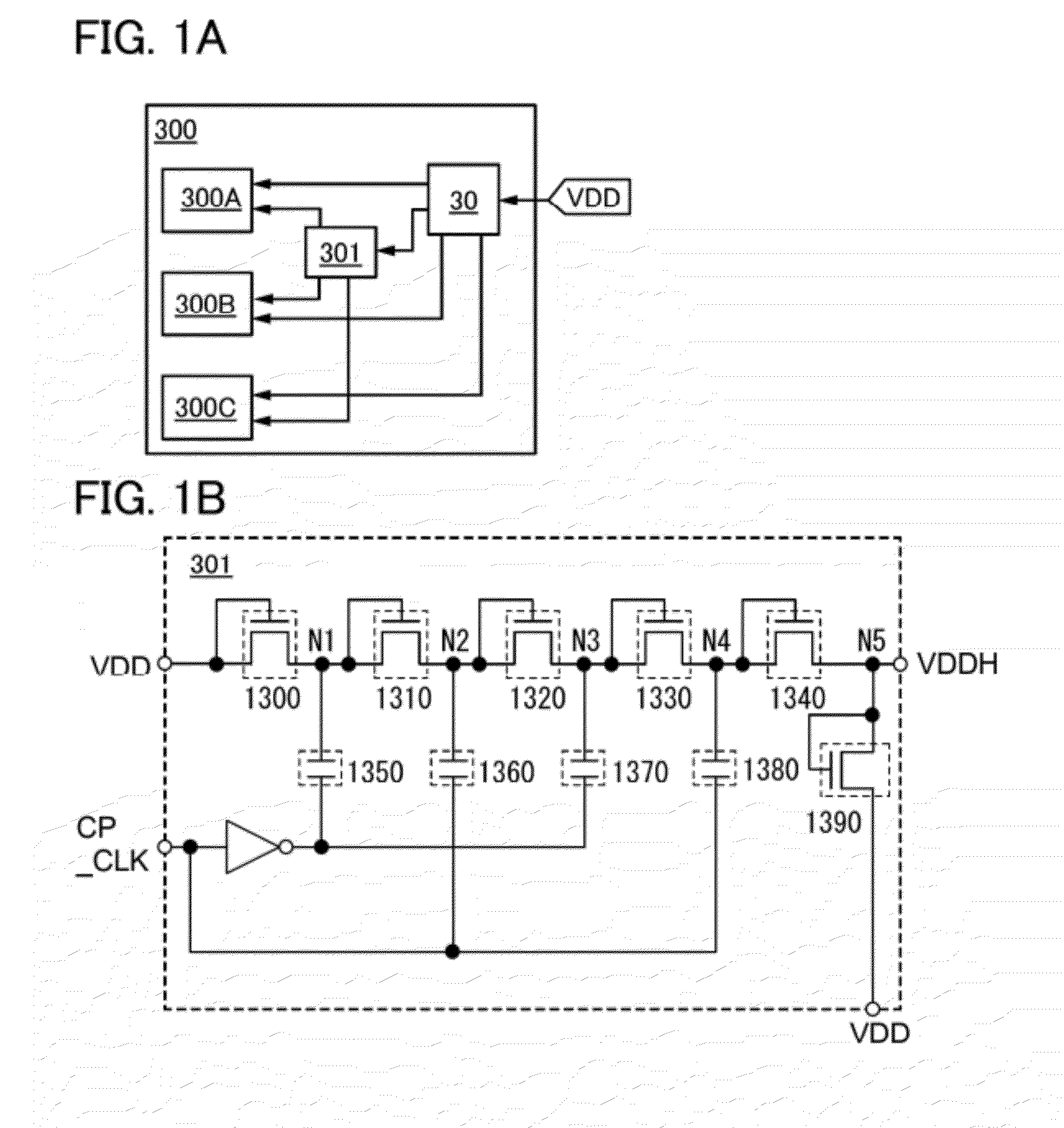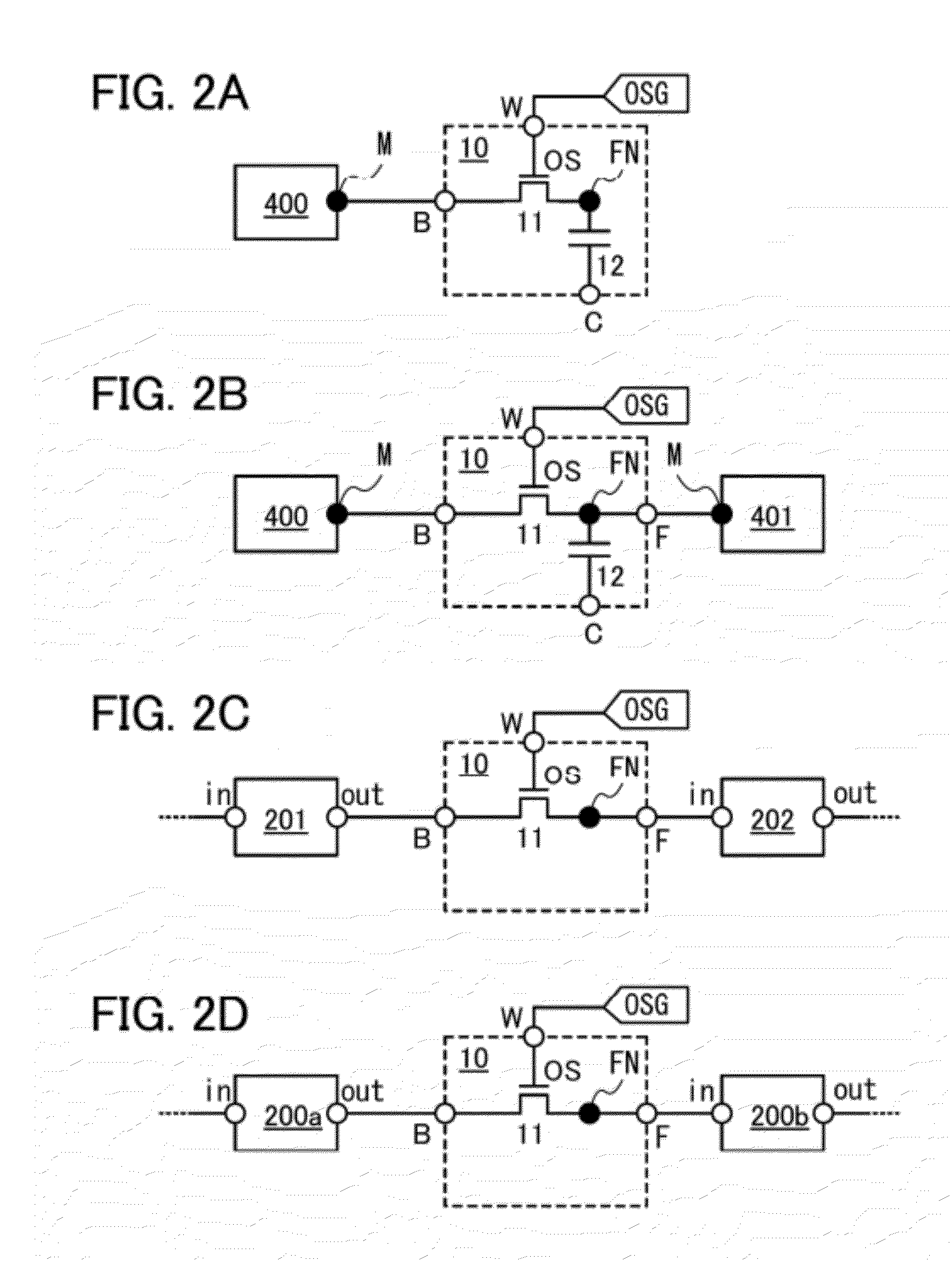Signal processing circuit
a technology of signal processing and circuit, applied in the field of signal processing circuit, can solve the problems of limited number of rewrite cycles, significant deterioration of memory elements, and writing errors, and achieve the effects of reducing writing errors and reading errors, low power consumption, and high reliability
- Summary
- Abstract
- Description
- Claims
- Application Information
AI Technical Summary
Benefits of technology
Problems solved by technology
Method used
Image
Examples
embodiment 1
[0071]FIG. 1A illustrates a signal processing circuit according to one embodiment of the present invention. In FIG. 1A, a signal processing circuit 300 includes a circuit unit 300A, a circuit unit 300B, a circuit unit 300C, a power supply circuit 30, and a step-up circuit 301. A first high power supply potential (hereinafter also “VDD”) input to the signal processing circuit 300 is input to the power supply circuit 30. The power supply circuit 30 selectively supplies the first high power supply potential (VDD) to each of the circuit units (the circuit unit 300A, the circuit unit 300B, and the circuit unit 300C). Power consumption of the signal processing circuit can be reduced with a normally-off driving method by which the first high power supply potential (VDD), that is, the power supply voltage is selectively supplied only to a circuit unit intended to be operated. The power supply circuit 30 also supplies the first high power supply potential (VDD) to the step-up circuit 301. Th...
embodiment 2
[0134]In this embodiment, one embodiment of the step-up circuit 301 in FIG. 1A of Embodiment 1 will be described.
[0135]FIG. 1B illustrates one embodiment of the step-up circuit 301. FIG. 1B illustrates an example of a four-stage step-up circuit. Typically, a step-up circuit performing n-stage step-up operations (n: a natural number) can be used. The first high power supply potential (VDD) is supplied to an input terminal (here, referring to a source terminal or a drain terminal that is electrically connected to a gate terminal) of a first transistor 1300. An output terminal (here, referring to the source terminal or the drain terminal that is not electrically connected to the gate terminal) of the first transistor 1300 is electrically connected to an input terminal of a second transistor 1310 and one of a pair of electrodes of a first capacitor 1350. Similarly, an output terminal of the second transistor 1310 is electrically connected to an input terminal of a third transistor 1320 ...
embodiment 3
[0143]A method for manufacturing a signal processing circuit will be described. This embodiment explains a method for manufacturing a signal processing circuit, using the transistor 11 whose channel is formed in the oxide semiconductor layer, the capacitor 12, and a transistor 133 included in the arithmetic circuits 201 and 202 as an example of components included in the combination of the volatile storage circuit 200 and the nonvolatile storage circuit 10 illustrated in FIGS. 3A to 3E. Here, the case where a transistor whose channel is formed in a silicon layer is used as the transistor 133 is described as an example.
[0144]Note that the transistors (the first transistor 1300, the second transistor 1310, the third transistor 1320, the fourth transistor 1330, the fifth transistor 1340, and the transistor 1390 in FIG. 1B) included in the step-up circuit 301 can be formed in a manner similar to that of the transistor 11. Further, the capacitors (the first capacitor 1350, the second cap...
PUM
 Login to View More
Login to View More Abstract
Description
Claims
Application Information
 Login to View More
Login to View More - R&D
- Intellectual Property
- Life Sciences
- Materials
- Tech Scout
- Unparalleled Data Quality
- Higher Quality Content
- 60% Fewer Hallucinations
Browse by: Latest US Patents, China's latest patents, Technical Efficacy Thesaurus, Application Domain, Technology Topic, Popular Technical Reports.
© 2025 PatSnap. All rights reserved.Legal|Privacy policy|Modern Slavery Act Transparency Statement|Sitemap|About US| Contact US: help@patsnap.com



